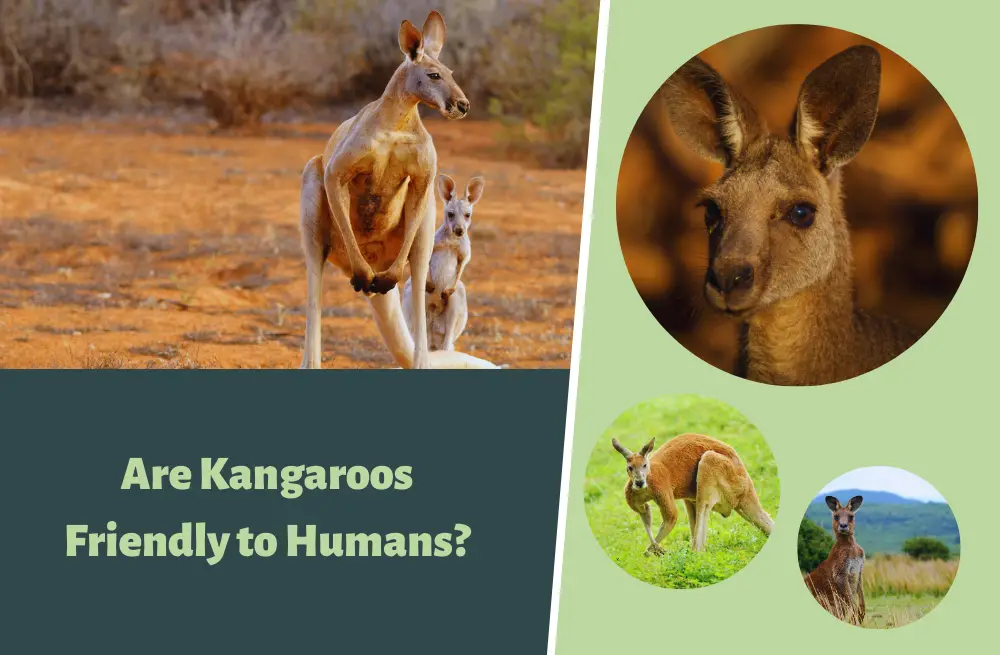Kangaroos communicate with each other through vocalizations, body language, and scent marking. They use a variety of vocal sounds to express aggression, issue warnings, and establish dominance. Body language, including postures, gestures, and facial expressions, conveys messages about dominance, submissiveness, and emotional states.
Scent marking with specialized glands helps mark territories and establish individual identity. These communication methods facilitate social interactions and maintain group cohesion among kangaroos.
In this article, we will delve into the realm of kangaroo communication and unveil the secrets of their language. From vocalizations to body language, we will unravel the various methods through which kangaroos communicate with one another.
Kangaroos communicate with each other through a variety of methods
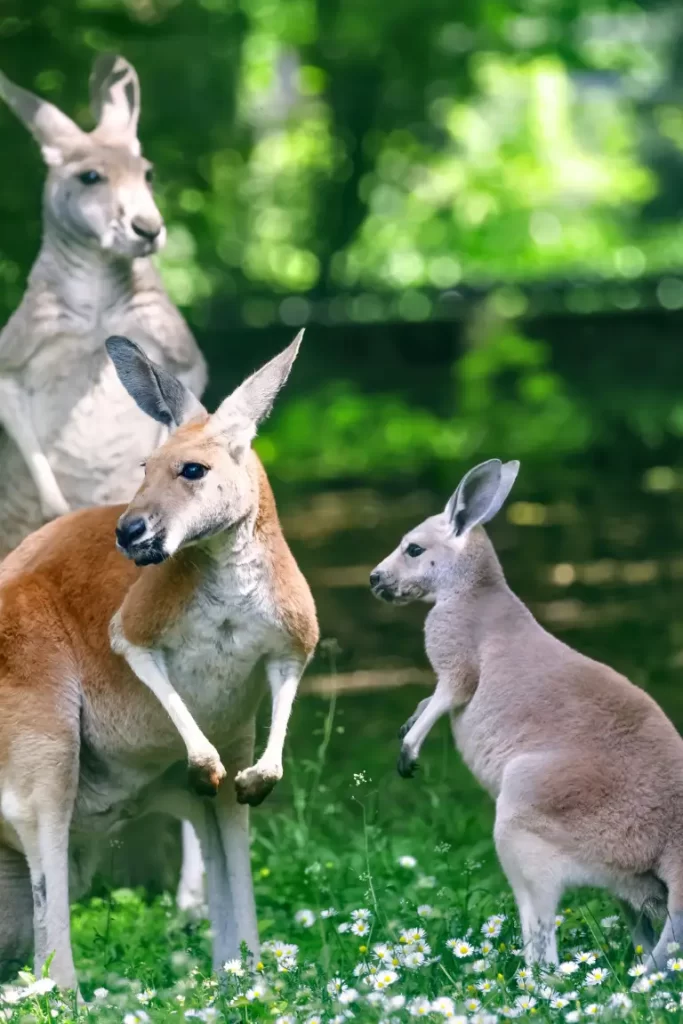
Kangaroos employ a range of communication methods to interact and convey information within their social groups. Here are some of the primary ways kangaroos communicate with each other:
Vocalizations
Vocalizations play a crucial role in the communication repertoire of kangaroos. One prominent vocalization is the growl, a deep and guttural sound produced by male kangaroos during territorial disputes or when asserting dominance over rivals.
The growl serves as a warning signal to potential challengers and communicates the kangaroo’s strength and determination.
Another vocalization commonly heard among kangaroos is the grunt. This short, sharp sound is often emitted during aggressive encounters or when expressing frustration or annoyance. Grunts can be directed towards other kangaroos as a form of communication to establish boundaries or resolve conflicts.
Hisses are also a part of the kangaroo’s vocal repertoire. Kangaroos emit hissing sounds as a defensive mechanism when they feel threatened or are trying to deter potential predators. Hissing is often accompanied by other defensive behaviors like arching the back and baring the teeth, serving as a clear warning signal to stay away.
Barking is another vocalization used by kangaroos, particularly during times of danger or to alert other members of the group to potential threats. The bark is a loud, repetitive sound that carries over long distances, effectively communicating the presence of danger to nearby kangaroos.
It is important to note that these vocalizations can vary in their intensity, duration, and pitch, depending on the specific context and the individual kangaroo. Additionally, different species of kangaroos may have unique vocalizations specific to their species or region.
Foot Stomping
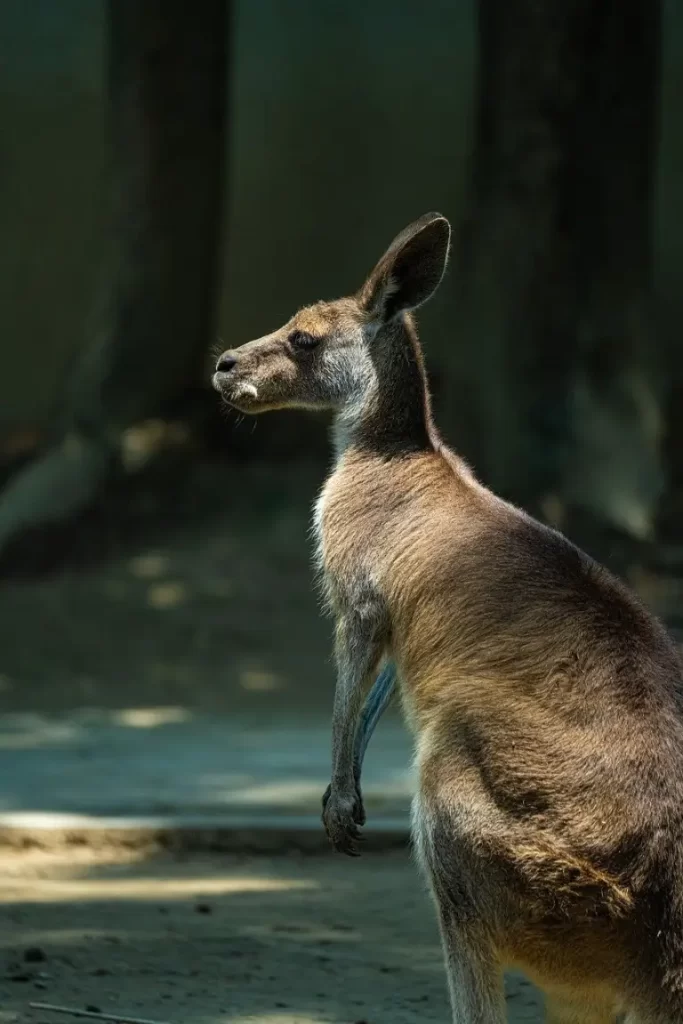
Foot stomping is indeed a notable communication behavior exhibited by kangaroos. When a kangaroo forcefully stomps its hind legs on the ground, it serves as a warning signal to alert other kangaroos in the area. This behavior is particularly crucial in situations where there may be potential threats or dangers, such as the presence of predators like wild dogs or dingoes.
By stomping their feet, kangaroos generate loud noises that can travel over long distances, effectively signaling a warning to their fellow roos. Additionally, they may accompany the foot stomping with high-pitched barking sounds, further enhancing the communication of potential danger.
This communication strategy allows kangaroos to exhibit cooperative behavior and help protect their group members. By alerting others to the presence of predators, they contribute to the overall safety and survival of their social group. The combination of foot stomping and vocalizations creates a clear and unmistakable warning system that helps kangaroos stay vigilant and respond appropriately to potential threats.
The ability of kangaroos to communicate through foot stomping and vocalizations showcases their remarkable social behavior and cooperative nature. It demonstrates their capacity to work together as a group, ensuring the collective well-being and survival of their species.
Body Language
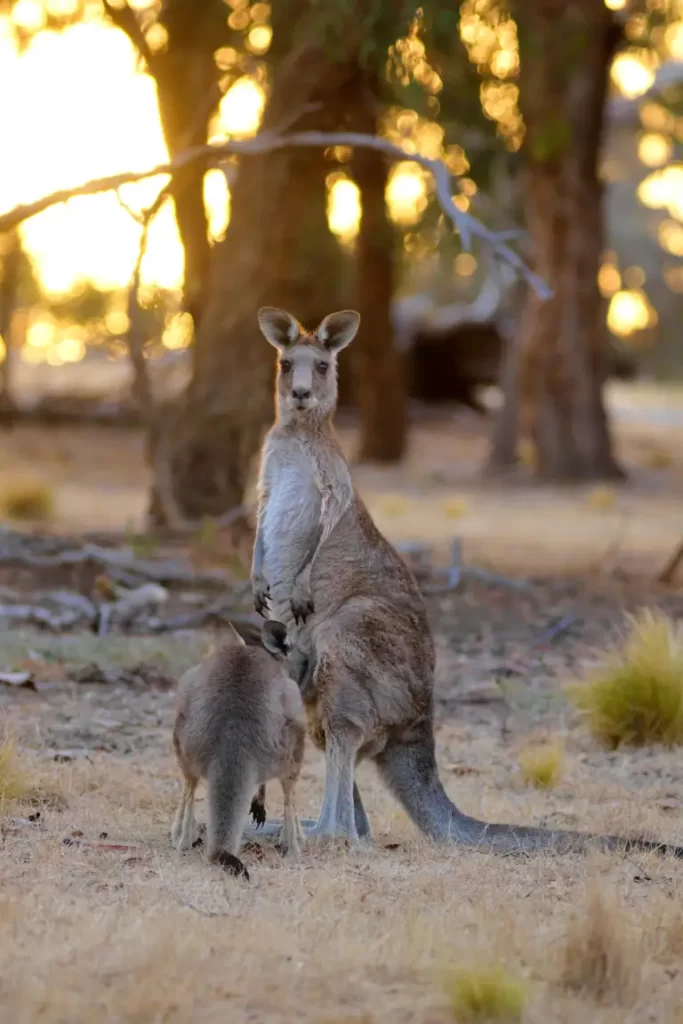
In addition to vocalizations, body language plays a significant role in the communication of kangaroos. They have a wide array of postures, gestures, and movements that convey important messages to other kangaroos.
One key aspect of kangaroo body language is their posture. An upright posture, with the body held tall and the tail lifted, is often associated with dominance. Male kangaroos, in particular, adopt this posture during territorial disputes or when asserting their dominance over other males. By displaying an upright posture, they signal their strength and willingness to defend their territory or position within the social hierarchy.
On the other hand, a lowered body posture indicates submissiveness or a non-threatening stance. Kangaroos may crouch down with their bodies close to the ground and their tails hanging loosely when they want to avoid confrontation or show deference to a more dominant individual. This posture helps to defuse potential conflicts and maintain social harmony within the kangaroo group.
Facial expressions also play a role in kangaroo communication. They use their ears and eyes to convey their emotional states and intentions.
For example, when a kangaroo is alert or attentive, its ears may be pricked up and facing forward, enabling them to detect sounds and movements in their surroundings. Conversely, flattened ears may indicate fear or submission. Eye contact is also important, as direct eye contact can signal aggression or dominance, while averted gaze may convey submissiveness or a desire to avoid conflict.
Kangaroos also use other body movements and gestures to communicate. For instance, they may hop quickly or stomp their feet on the ground as a warning to others, indicating a potential threat or territorial defense. Tail movements are another important aspect of kangaroo body language. A vigorously wagging tail can be a sign of agitation or aggression, while a relaxed tail hanging loosely indicates a calm and non-threatening state.
It’s worth noting that different species of kangaroos may have variations in their body language signals, and individual kangaroos may also exhibit unique expressions and behaviors.
By using body language, kangaroos can convey their intentions, establish social hierarchies, and maintain peaceful interactions within their groups. These non-verbal cues are essential for effective communication and understanding among kangaroos, contributing to their social structure and overall survival.
You might also like: How do Kangaroos Protect Themselves from Predators?
Olfactory Communication
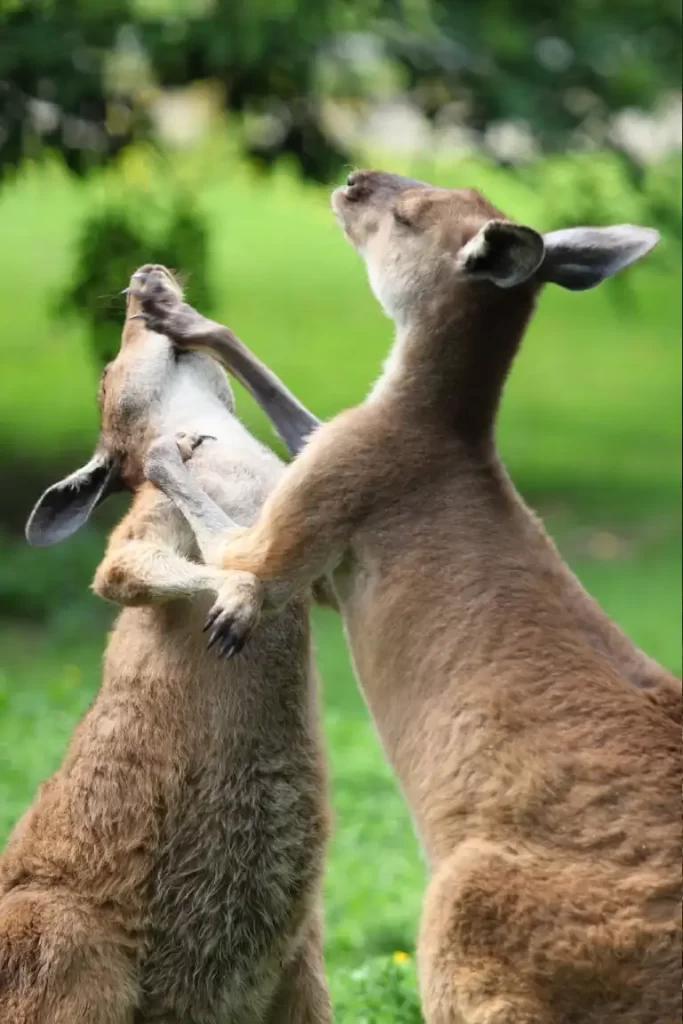
Kangaroos have specialized scent glands located on their foreheads and chests, which produce distinct odors. These scent glands play a crucial role in their communication.
By rubbing these glands on objects or other kangaroos, they can leave behind their scent markers, creating a unique olfactory signature. This scent communication serves multiple purposes, including marking territory boundaries, indicating individual identity, and conveying social information.
When kangaroos leave their scent on objects or vegetation, it acts as a clear signal to other kangaroos, indicating that the area has already been claimed.
This helps in establishing territorial boundaries and reducing potential conflicts. Additionally, scent communication helps to establish social hierarchies within kangaroo groups. Dominant kangaroos often have a stronger and more distinctive scent, which communicates their status and authority to others.
Furthermore, olfactory communication facilitates group cohesion by allowing kangaroos to recognize familiar individuals within their social network.
Each kangaroo has its own unique scent profile, enabling others to identify and distinguish between individuals. This helps in forming and maintaining social bonds, coordinating group movements, and ensuring overall group cohesion.
Through olfactory communication, kangaroos can effectively convey important information about territory ownership, individual identity, and social hierarchy. It is a vital component of their communication repertoire, working in conjunction with vocalizations and body language to facilitate effective interactions and maintain social order within kangaroo communities.
Visual Displays
In certain situations, kangaroos engage in visual displays to communicate with each other. These displays can involve standing on their hind legs and thumping the ground with their forelimbs, which serves as a warning signal to potential threats or competitors. These displays help establish dominance hierarchies and resolve conflicts without physical confrontation.
Communication Between Mother and Young
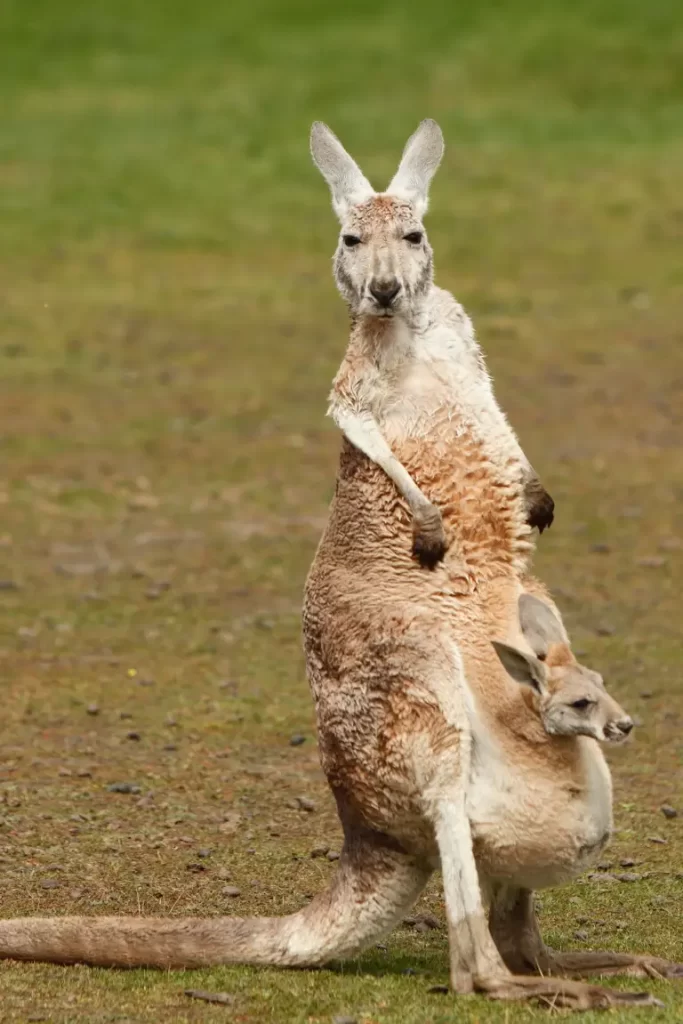
Communication between mother kangaroos, or does, and their young joeys is a vital aspect of their bonding and care. Through distinct clucking or clicking noises, does communicate with their joeys to convey various messages and initiate specific behaviors.
When a doe needs her joeys to come to her, she will often produce repeated clucking or clicking sounds. These sounds serve as a means of calling and attracting the attention of her young ones. By emitting these unique vocalizations, the doe can communicate her presence and signal the joeys to approach or follow her.
The clucking or clicking noises produced by the mother kangaroo are distinctive and easily recognizable to the joeys. It is through this form of vocal communication that the doe establishes a bond with her offspring and guides them in their interactions and movements.
These vocal exchanges between mother kangaroos and their young play a crucial role in their development and safety. The joeys learn to recognize and interpret the sounds of their mother, enabling them to respond appropriately to her calls and instructions. It helps them stay close to their mother for protection and guidance, especially in environments where potential dangers may be present.
The communication between mother kangaroos and their young through clucking or clicking sounds highlights the strong maternal instincts and nurturing behavior exhibited by these marsupials. It showcases the unique bond between mothers and joeys and emphasizes the importance of vocal communication in maintaining the welfare and cohesion of kangaroo families.
Protective behavior

Protective behavior is an important aspect of kangaroo communication, particularly when they feel threatened or fearful. When a kangaroo perceives a potential danger or intrusion, it may exhibit specific vocalizations and behaviors to deter the threat and protect itself.
One way kangaroos express their discomfort or unease is through growling sounds, which resemble those made by canines. This growling serves as a clear warning to the perceived threat, signaling that the kangaroo is prepared to defend itself. The growling sound is intended to communicate a message: “Back off and retreat.” It serves as a vocal boundary to establish a safe distance between the kangaroo and the source of perceived danger.
If the warning growl is ignored or the perceived threat persists, a kangaroo may resort to physical aggression as a means of self-defense. Kangaroos have powerful legs and sharp claws that they can use to protect themselves. However, physical attacks are typically a last resort and occur when other warning signs and vocalizations are disregarded.
In addition to growling, during aggressive altercations or confrontations with other kangaroos or predators, kangaroos may emit piercing “screaming” sounds. These vocalizations serve as a display of dominance or as a means of asserting their presence during territorial disputes or social conflicts. The piercing screams are intended to intimidate the opponent and establish dominance within the group or defend their territory.
These protective vocalizations and behaviors highlight the kangaroo’s ability to communicate and assert themselves when feeling threatened. While they generally prefer to avoid confrontations, kangaroos have evolved these vocal and physical expressions as a means of self-preservation and safeguarding their territory and offspring.
Related animals
Conclusion:
Kangaroos communicate with each other through vocalizations, body language, and scent marking. They use a variety of vocal sounds to express aggression, issue warnings, and establish dominance. Body language, including postures, gestures, and facial expressions, conveys messages about dominance, submissiveness, and emotional states.
Scent marking with specialized glands helps mark territories and establish individual identity. These communication methods facilitate social interactions and maintain group cohesion among kangaroos.


